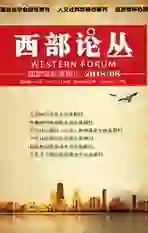Coursebook Analysis and Adaptation on NSEFC
2018-09-03曹立秋
曹立秋
Abstract: This paper applies Grants 4 communication tests to the Book 1 of NSEFC coursebook published by PEP and makes an evaluation about how communicative it is. Whats more, this paper takes Unit 1 Festivals around the world of the coursebook for example to makes an evaluation about how communicative it is. And finally, I gives some suggestions on materials adaptation of NSEFC.
Key words: Coursebook analysis NSEFC Grants 4 communication tests
Ⅰ. Introduction of the Coursebook
A fabulous coursebook should have advanced methods of teaching. Whats more, English is a language and we learn it just in order to use it to communicate with others instead of getting a high score in the examination. As a result, the coursebook should be students-centered and communicative book becomes more and more important in senior high school.
Grant has four communication tests to check whether the coursebook is communicative: (1)Is the lg-spoken or written-unnatural? (2)Are the lg. exercises all merely textbook activities of a kind no one does in real life? Or are many of the activities likely to occur in real life? (3)Do the activities only emphasize accuracy (particularly written accuracy) rather than fluency? (4)Does the course emphasize study or practice? And each compulsory book of NSEFC has five units, and each unit carries out listening, speaking, reading and writing activities based on a topic. Each unit contains nine parts: Warming Up, Pre-Reading, Reading, Comprehending, Learning about Language, Using Language, Summing Up, Learning Tip and Reading For Fun. Although there are only five units in this coursebook, each unit is related to a topic which is closely to students daily life. These topics involve popular science and modern technology, friendship, festivals etc.
As a result, we can find the coursebook emphasizes practice. There are a few contents to introduce grammars, especially in Discovering useful structures of coursebook, plenty of grammar exercises are designed in this part. The shinning point in this coursebook is that there are many activities in the coursebook and the coursebook has told us how to do the tasks, such as individual work, pair work or group work in order to cultivate students all kinds of learning strategies.
Ⅱ. The Analysis of the Coursebook
First of all, I will choose two units from the coursebook to analyze how communicative it is. The two units are Unit 1 Festivals around the world and Unit 2 Healthy eating. The topic of Unit 1 Festivals around the world is related to festivals and this unit also contains nine parts: Warming Up, Pre-Reading, Reading, Comprehending, Learning about Language, Using Language, Summing Up, Learning Tip and Reading For Fun. In Warming Up, it presents charts and three open questions about festivals or celebrations in different countries to require students to work in pair. Its purpose is to inspire students' learning interest and to prepare students for the central topic. Pre-reading sets up some open questions related to the text in the Reading to help students predict the text's contents and encourage them to think actively and express their ideas in English. As we all known, the coursebook pays attention to the language spoken.
Secondly, we have known there are plenty activities in the part of Comprehending. In a communicative course, the activities always occur in real life. The activities in Reading and Comprehending are based on the contents of dialogues or the reading materials, which includes all kinds of exercises, activities and tasks, such as filling in blanks, reading, skimming, discussion, summary, etc. So theyre meaning.
Thirdly, a communicative course emphasizes fluency rather than just accuracy. In the part of Learning about Language and Using Language, there are some activities of pair work or group work. Students should make up a conversation with key works they have learnt by themselves and then show it to their classmates. There is no doubt that there must be some mistakes, however, as long as they can speak fluently, it is successful.
The last but not least, a communicative course emphasize practice. In the part of Learning about Language, there are so much practice about useful words and expressions and useful structures that students have enough time to use words and modal verbs after studying them. And in Summing Up, it helps students organize and consolidate the knowledge they have learned in the unit which includes the cultural knowledge, useful verbs, nouns, expressions and new grammatical items, etc.
Ⅲ. Suggestions on Materials Adaptation
There are some suggestions on materials adaptation of NSEFC, which can be used as references for compilers.
1.Integrate More Interesting Learning Materials
According to the NEFCS, textbooks should stimulate students motivation and interests through interesting activities and contents. NSEFC consists of various topics; however, they are not very attractive to students. Therefore, compilers should make an investigation on the topics that senior middle school students are interested in, and integrate more interesting materials to stimulate their motivation.
2.Focus on Language Recycling
SLA process is a recycling one. Learners cannot master the language items all at once. They need to review the language items several times and practice the language continuously. Therefore, compilers need to focus on the recycling of vocabulary and grammar, which better helps students to strengthen what they have learnt.
